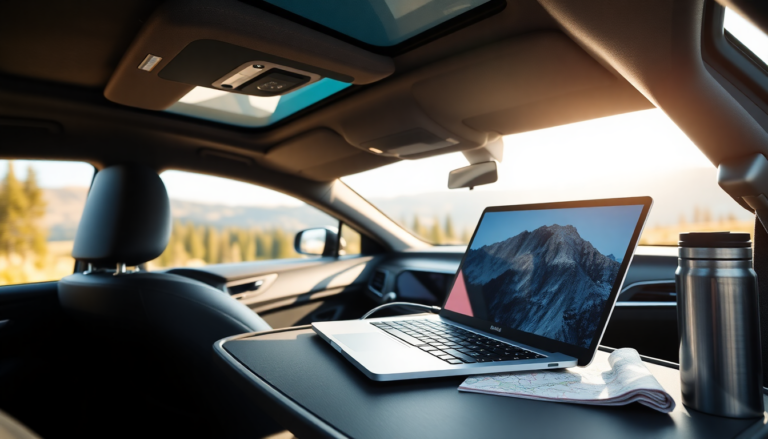Argomenti trattati
As digital nomads and tech enthusiasts increasingly rely on their laptops, keeping these devices powered while traveling has become a top priority. Have you ever found yourself on a road trip or a weekend camping getaway, only to struggle with finding an AC outlet? You’re not alone! Luckily, there are several effective methods to charge your laptop in your car, ensuring you stay connected no matter where your adventures take you.
Understanding Your Laptop’s Power Needs
Before you hit the road, it’s essential to grasp your laptop’s power requirements. Most laptops need between 30 to 70 watts for charging—significantly more than what devices like smartphones require. Fortunately, the average car battery is built to handle this demand, boasting about 600 watt-hours of power and recharging while the engine runs. This means you can efficiently charge your laptop while your vehicle is on, providing a steady energy supply without excessively draining the battery.
However, charging your laptop while the car is idle can lead to trouble. Car batteries aren’t designed for prolonged power drains, which could risk damaging the battery or leaving you stranded with a dead battery. To avoid this, aim to charge your laptop only when the engine is running and limit charging sessions to just a few hours at a time.
Methods for Charging Your Laptop on the Road
So, how can you charge your laptop while on the go? One of the simplest methods is to use your car’s USB-C port, if it’s available. Many modern vehicles come equipped with high-wattage USB-C ports that can charge laptops. Just connect your laptop with a compatible USB-C cable, and you should see your device starting to charge. Keep in mind, though, that this method might not provide the fastest charge.
If you need a bit more power, investing in an inverter can be a game-changer. A power inverter converts your car’s DC power to AC power, which is what most laptop chargers require. After connecting your inverter to your car’s power source, simply plug your laptop charger into the inverter. Opt for an inverter rated between 150W to 300W to ensure it meets your laptop’s charging needs. Just a heads up: leaving the inverter plugged in overnight can drain your battery.
Another practical solution is to use a power adapter that plugs into your car’s cigarette lighter outlet. This method allows you to connect your laptop charger directly to it, simplifying the charging process and providing a safer option for your car’s battery.
Additional Charging Solutions for On-the-Go
Power banks have surged in popularity for their convenience and portability. They offer the flexibility to charge your laptop in the car or anywhere else without needing a power source. Just make sure your power bank is fully charged before your trip and check its compatibility with your laptop model.
Have you considered solar panels or foldable solar blankets? These eco-friendly options can also be viable for charging your laptop. While they do require sunlight to generate power, they won’t draw from your car’s battery. Once you reach your destination, simply set up the solar panel in a sunny spot to keep your devices charged.
In conclusion, there are multiple options for keeping your laptop charged while on the road. Whether you choose a direct connection via USB-C, utilize an inverter, or employ a portable power bank, each method offers its own advantages. The key is to select a charging solution that fits your travel style and ensures you remain powered up throughout your journey. Ready to hit the road and stay connected?

